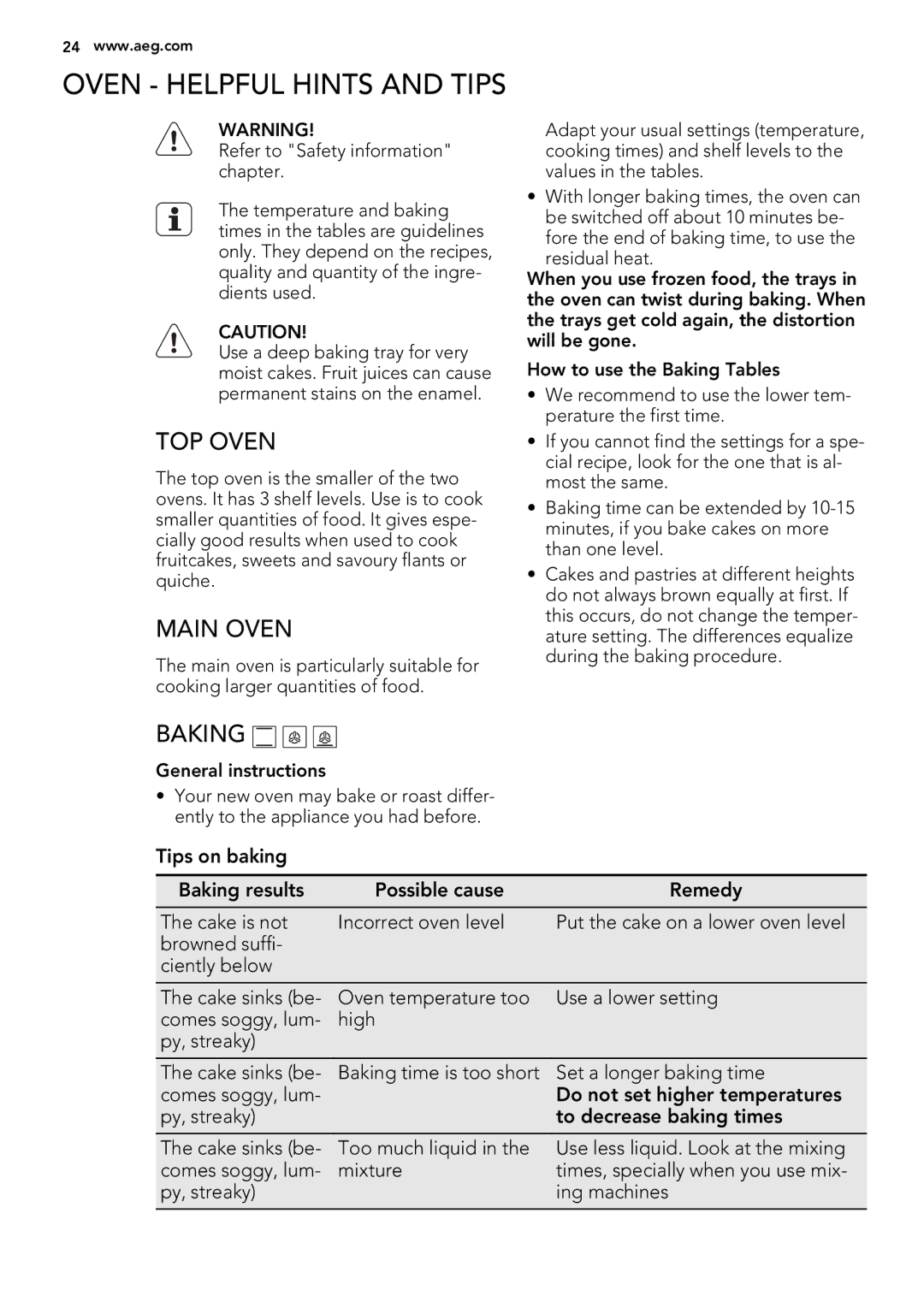
24 www.aeg.com
OVEN - HELPFUL HINTS AND TIPS
WARNING!
Refer to "Safety information" chapter.
The temperature and baking times in the tables are guidelines only. They depend on the recipes, quality and quantity of the ingre- dients used.
CAUTION!
Use a deep baking tray for very moist cakes. Fruit juices can cause permanent stains on the enamel.
TOP OVEN
The top oven is the smaller of the two ovens. It has 3 shelf levels. Use is to cook smaller quantities of food. It gives espe- cially good results when used to cook fruitcakes, sweets and savoury flants or quiche.
MAIN OVEN
The main oven is particularly suitable for cooking larger quantities of food.
Adapt your usual settings (temperature, cooking times) and shelf levels to the values in the tables.
•With longer baking times, the oven can be switched off about 10 minutes be- fore the end of baking time, to use the residual heat.
When you use frozen food, the trays in the oven can twist during baking. When the trays get cold again, the distortion will be gone.
How to use the Baking Tables
•We recommend to use the lower tem- perature the first time.
•If you cannot find the settings for a spe- cial recipe, look for the one that is al- most the same.
•Baking time can be extended by
•Cakes and pastries at different heights do not always brown equally at first. If this occurs, do not change the temper- ature setting. The differences equalize during the baking procedure.
BAKING 


General instructions
•Your new oven may bake or roast differ- ently to the appliance you had before.
Tips on baking
Baking results | Possible cause | Remedy |
The cake is not | Incorrect oven level | Put the cake on a lower oven level |
browned suffi- |
|
|
ciently below |
|
|
The cake sinks (be- | Oven temperature too | Use a lower setting |
comes soggy, lum- | high |
|
py, streaky) |
|
|
The cake sinks (be- | Baking time is too short | Set a longer baking time |
comes soggy, lum- |
| Do not set higher temperatures |
py, streaky) |
| to decrease baking times |
The cake sinks (be- | Too much liquid in the | Use less liquid. Look at the mixing |
comes soggy, lum- | mixture | times, specially when you use mix- |
py, streaky) |
| ing machines |
|
|
|
